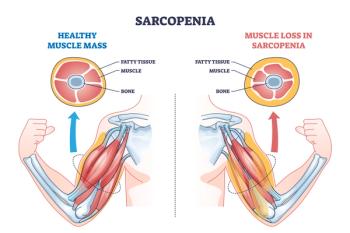
Study Highlights Critical Need For Improved Understanding of Childhood Interstitial Lung Disease
Diagnostic criteria for pulmonary fibrosis and other fibrotic diseases in children are lacking. That void hampers an understanding of how disease progresses in children and adolescents and what the outcomes are.
Childhood interstitial lung disease encompasses a range of rare respiratory disorders that affect infants, children and adolescents, with some numerous cases leading to pulmonary fibrosis.
A new study, led by Matthias Griese, professor of pediatrics and head of the pediatric pneumonlogy, cystic fibrosis and rare lung disease center at the Universities Children’s Hospital in Munich, aimed to provide comprehensive insights into fibrosing lung diseases in childhood and identify areas for future research.
Griese noted that although pulmonary fibrosis is a leading cause of death in adults with interstitial lung disease, it is relatively rare among pediatric patients. Additionally, established diagnostic criteria for pulmonary fibrosis and other fibrotic diseases in children are lacking, which hampers the understanding of disease progression and outcomes.
Because genetic factors play a role in various childhood interstitial lung disease disorders, many affected children can reach adulthood, at which stage their care is transferred to adult physicians, he said.
Griese assembled a research team that included experts from many of the leading children’s hospitals in the world, includingChildren's Hospital of Pittsburgh of UPMC, Children’s Hospital Los Angeles, University of Colorado, Children's Hospital Colorado in Aurora, Centre Hospitalier Intercommunal de Créteil in Créteil, Hôpital Trousseau in Paris, Hannover Medical School in Hannover, The Children's Hospital of Philadelphia and Seattle Children’s Hospital in Seattle.
Their
Analysis of European and U.S. registries identified 47 distinct entities where fibrosis was recorded. The researchers examined each one and considered other diseases such as systemic lupus erythematosus, rheumatological disorders, fibrosis, neurodegeneration and cerebral angiomatosis syndrome, FARS1-related disorders and autoinflammatory diseases.
From their deep dive, they concluded that there remains a critical need for improved knowledge of among pulmonologists to optimize the transition of care from pediatric to adult facilities and that updated evidence-based guidelines are needed. The guidelines, they said, should incorporate recommendations for the diagnosis and management of immune-mediated disorders, as well as childhood interstitial lung disease in older children approaching adulthood.
“The last decade, there have been developments in our understanding of the genetic component of child [childhood interstitial lung disease] and the progression of certain disorders into adulthood,” Griese said in an email. Translational and clinical research into the mechanisms of fibrosing pathways in well-defined cases is critical to developing targeted strategies, he added.
What’s more, monitoring disease progression and developing a therapeutic strategy to prevent pulmonary fibrosis or its progression are imperative for the future treatment of interstitial lung disease in children and adolescents and when they move into adult care, wrote Griese and the co-authors in Thorax study.
Newsletter
Get the latest industry news, event updates, and more from Managed healthcare Executive.


















































